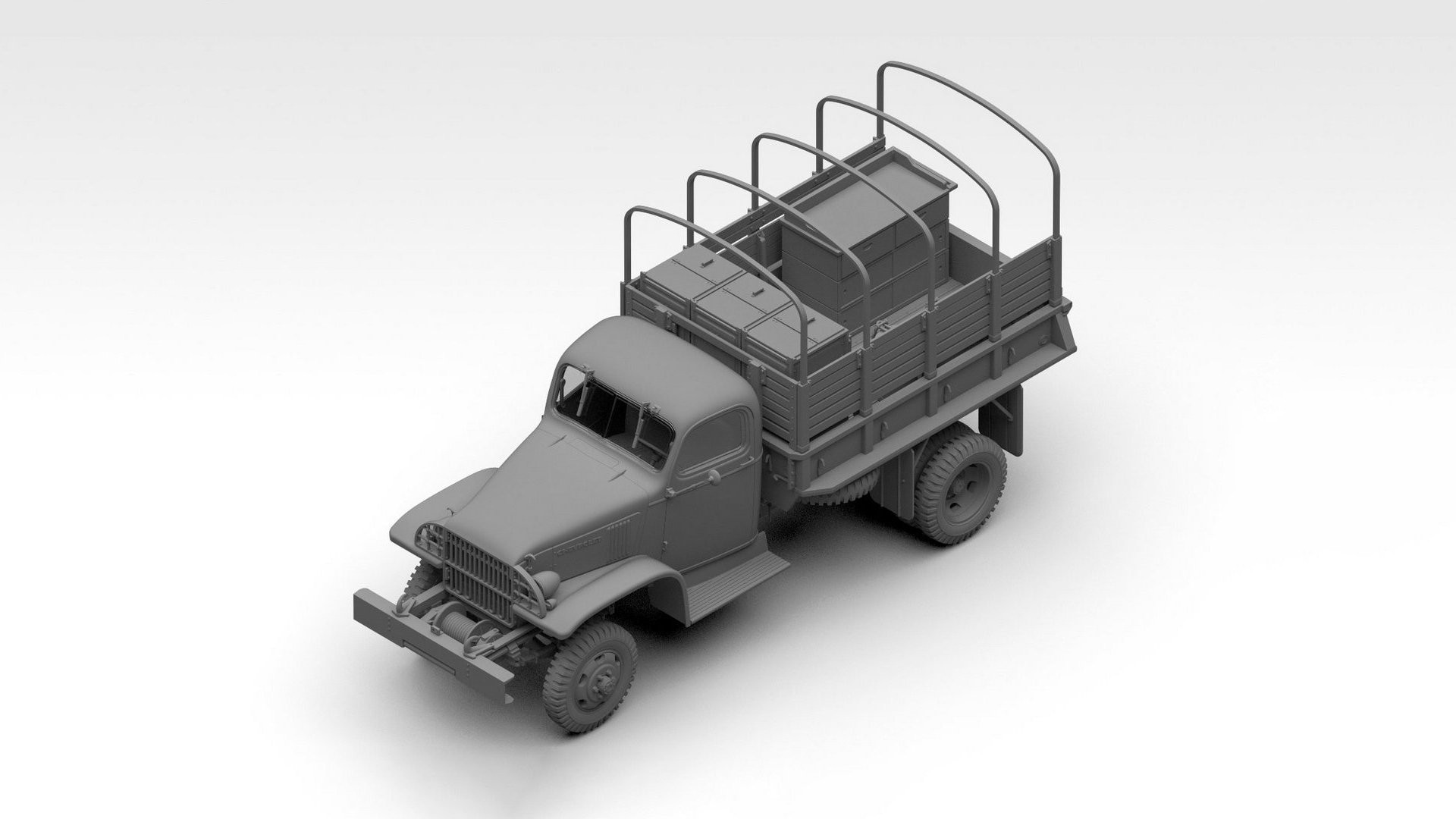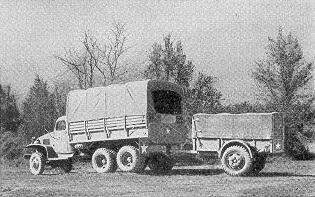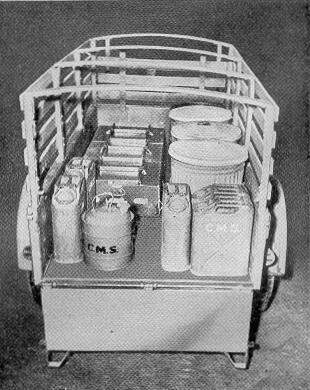Model: 35587 Scale: 1/35

This is partial text from the full article (usually with photos) at https://armorama.com/news/in-process-wwii-us-army-kitchen-truck
Model: 35587 Scale: 1/35

I don’t think the Army used this truck much.
Looks like they were more commonly on 2 1/2 ton CCKWs w/ Ben Hur trailers.

Based upon?
In the link you provide the author discusses the use of a “2 1/2 ton truck,” but never specifues it as a CCKW, although photos from a TM show one. As you read later in the article, he purchased an M211 (postwar GMC that was not very popular) and built a field ktichen truck on it.
There are, however, examples of the G506 used for that purpose as well.
https://forum.ww2dodge.com/viewtopic.php?t=
I’ve always liked the proportions of the G506.
I wonder if ICM will sell the kitchen set separately?
It was my understanding that one of the gripes of US troops during WW2 was the lack of hot meals. British and Commonwealth troops were intended to get a hot meal once aday when ever possible.
I suspect the US kitchen will be released as a stand alone in time.
Isn’t it odd that the water buffalo isn’t towed behind the truck instead?
There was more than one truck in the mess section to carry supplies and soldiers. I’m sure the water buffalo was pulled by another truck in the section.
I see.
The chart indicates that other supplies, besides the water, was brought in by some other unit. No fuel trucks, no ammo trucks (tanks consume heavier ammo than infantry only).
Water could also be a commodity brought in by some other unit.
Water can usually be found “in theater” depending on geography so water supply trucks or trailers may not always be needed in each individual company.
The Tankograd book shows a number of CCKWs as kitchens, but that doesn’t rule out Chevy G506s in that role too. I suspect it depends on the balance of vehicle types in each theatre of war etc.
I’d probably build the truck as a cargo version, and put the kitchen into one of the many CCKWs in the stash…
Word to the wise:
ICM already has 9 other variants of the truck on the market
https://www.scalemates.com/kits/icm-35587-army-kitchen-truck--1527758
Military and civilian, different load beds, with Katyushas, field chapel, with and without crew et.c.
Wait for the kitchen stuff to be released separately or go with your plan?
http://www.seabeecook.com/cookery/cooking/combat_meals.htm
1944 Army Kitchen Truck - The GMC CCKW (some useful bits of information)
I presume you have all the information you need but just in case someone else hasn’t seen this review already or, God forbid, forgotten all about it:
Photos of a “restoration” project mixed with original photos
Indeed! I have several of those in the stash already, as well as the Tankograd book. But at the rate I build, the separate kit may well be released… (But you can never have too many trucks!)
Amen!
I am fairly certain the wives of Matt and Wade would dispute that claim.
Even with one hand figuratively tied behind my back,(it is actually secured to my side) on some pretty good pain meds, late at night with a cantankerous Chihuahua in my lap, I can still do more than speculate. ![]()
The 1511th and 1512th Engineer Water Supply Companies were assigned the the 3rd Army Engineers. In fact, the Engineer Corps was resposible for water purification until 1981 when it passed to the Quartermaster Corps.
Thorough studies of water availabilty were done prior to D-Day, to choose a theater. And again, engineer units were responsible for the infrastructure required to obtain, purify, and deliver water.
Water trailers did exist, but water was mainly transported in bowsers, and often distributed in 5 gallon fuel cans which were reserved for that purpose.
Note photo. That’s not gasoline in those cans.

During my Swedish conscript days we had a water bladder (200 liters??) in the company pantry truck. One truck carrying the kitchen and one box van with the pantry and water supply. The supply section also had a 10-ton cargo truck (120 mm mortar rounds are heavy) and a VW T2 pickup.
Handpump, hoses, filters, chlorine tablets and off to the nearest lake or stream and start pumping.